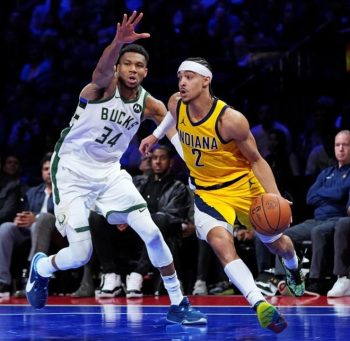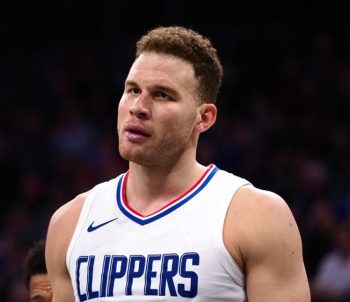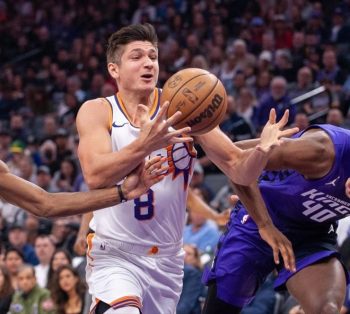NBA
NBA PM: Max Deals For Curry and Durant May Hurt Warriors

Sacrifice is among the terms most spoken of in team sports. Many say it, few live it.
Many talk it, and far fewer walk it.
Indeed, far fewer walk away from $12.6 million of guaranteed money the way David West did back in 2015. He left that sum of money on the table knowing that he wouldn’t be likely to recoup it. After emerging as the emotional leader for the proud Indiana Pacers franchise, West sought the championship that has alluded him. It was not in vain.
Yes, let’s talk about sacrifice.
Let’s talk about Stephen Curry and the meteoric ascent that he has enjoyed over the last few seasons. Clearly hobbled and less than 100 percent, Curry wanted nothing more than to prove that his team’s squandering of a 3-1 series lead to the Cleveland Cavaliers in the 2016 NBA Finals was due to his limitations, Draymond Green’s suspension, Andre Iguodala’s being hobbled and Andrew Bogut’s season-ending injury. As he far outplayed the value of the four-year, $44 million contract that he signed with the Warriors what seems like a lifetime ago, Curry had more than enough motive to prove himself this season. Instead, he decided to share his spotlight with Kevin Durant.
So yes, while witnessing the inevitable come to fruition on Monday night, while some felt badly for LeBron James and others felt that Durant and Curry had taken the easy way out, even in this story there are pros.
To their core, and from the first to the 12th man, the Warriors collectively epitomize the notion of individual sacrifice in pursuit of collective immortality. And sacrifice, to the extent to which they have individually done so, is a rare sight to behold.
The question that remains is whether or not the group will continue to do so.
This summer, the Warriors will have plenty of decisions to make. And what transpires this summer will have far-reaching implications when determining just how long what appears to be a dynasty in the making may last.
Stephen Curry, Andre Iguodala, Shaun Livingston, Zaza Pachulia and David West will all be unrestricted free agents this summer, while Kevin Durant holds a $27.7 million option for next season. It has been widely assumed that Curry will sign for the maximum allowable salary under the collective bargaining agreement, which, as a qualifying designated veteran player, works out to about $205 million over five years. That’s good for an average salary of $41 million per year.
In the case of Iguodala, the Most Valuable Player of the 2015 NBA Finals has amassed career earnings of about $122 million. While far from chump change, at 33 years old, Iguodala is likely staring at the possibility of signing the final multiyear contract of his career. Having proven himself to still be one of the most important members of the Warriors core, Iguodala may prioritize receiving fair market value for his services, especially after having won two championships.
As for Shaun Livingston, the former journeyman has found a home in Oakland and has become one of the most important rotation players that Steve Kerr has had at his disposal.
And of course, the elephant in the room is Durant. Due to the existence of what is commonly referred to as the “Non-Bird” exception, despite the fact that Durant has only played for the Warriors for one season, he can be re-signed by the club at a rate of 120 percent of his salary this season. That amount, $31.84 million, is significantly below the maximum allowable under the salary cap, which is about $36 million. If Durant opts out and insists on being paid the maximum, it would put the Warriors in a precarious situation; the team would very likely have to part with Iguodala and/or Livingston in order to make such an accommodation. Because Durant only has one year of service with the Warriors, the team would have to clear cap space in order to pay him the maximum.
In other words, Durant has three options: he can opt in to $27 million salary due to him next season, opt out and re-sign for $31 million using the Non-Bird exception or opt out and command the maximum-allowable salary. The three options are listed in order of what the Warriors would prefer, as Durant opting in would allow the club to re-sign Curry, Iguodala and Livingston and retain Durant. If he opts out, things get complicated. Although Durant has indicated his willingness to take “less” than the maximum, just how much less will make all the difference in the world.
So yes, while these Warriors have each individually sacrificed a great deal, the extent to which they will continue to do so may determine how long their reign lasts.
That applies to Curry, as well.
If Curry signs for the maximum-allowable salary, he would be earning north of $41 million in the third year of the contract (the 2019-20 season). Assuming Durant remains with the Warriors, even if he opts in to his 2017-18 salary of $27 million, by the time July 2019 comes around, Durant’s Bird rights would have fully vested with the Warriors, meaning he will have been eligible to have signed a contract that would be paying him somewhere in the neighborhood of $40 million for the 2019-20 season, as well. The 2019-20 season happens to be the final year of Draymond Green’s current contract, wherein he will earn $18.5 million. In other words, depending on what Curry and Durant’s new contracts look like, the Warriors may very well be paying $100 million to just those three players.
The reason July 2019 is important is because that happens to be when Klay Thompson will be eligible for a new contract. Depending on what transpires with regard to the cap, he too could be eligible for a maximum salary that exceeds $40 million per year.
Between now and then, the Warriors will likely be the favorite to represent the Western Conference in the NBA Finals. In all likelihood, we are witnessing the beginning of a dynasty. One thing that history has taught us, however, is that owners pursue a positive return on investment—especially owners who have enjoyed success.
One of the more underreported occurrences of LeBron James’ tenure in Miami was his unhappiness with the cost-cutting measures mandated by Micky Arison. After winning back-to-back championships, in an effort to help the bottom line, the HEAT waived Mike Miller and, a few months later, traded Joel Anthony. At the time, Pat Riley was quoted as mentioning that the HEAT were paying about $20 million in luxury taxes and that the NBA’s economic system had become “punitive” for teams like his.
As the Warriors seem poised to dominate for the foreseeable future, it will be quite interesting to see what the franchise’s economic situation looks like. If there’s one thing we have learned from other dynasties in the past, it’s that not everybody can be paid their fair market value.
Still years away from this being a major concern for the Warriors, between now and July 2019, plenty of decisions will be made that will probably impact the team. What transpires with the salary cap and luxury tax over the next few seasons will certainly have an impact, too.
But either way, make no mistake about it, the salaries that Curry and Durant command this summer will have far-reaching ramifications.
We’ll see what’s deeper—their desire for riches, or their willingness to continue to sacrifice in the name of their team.











